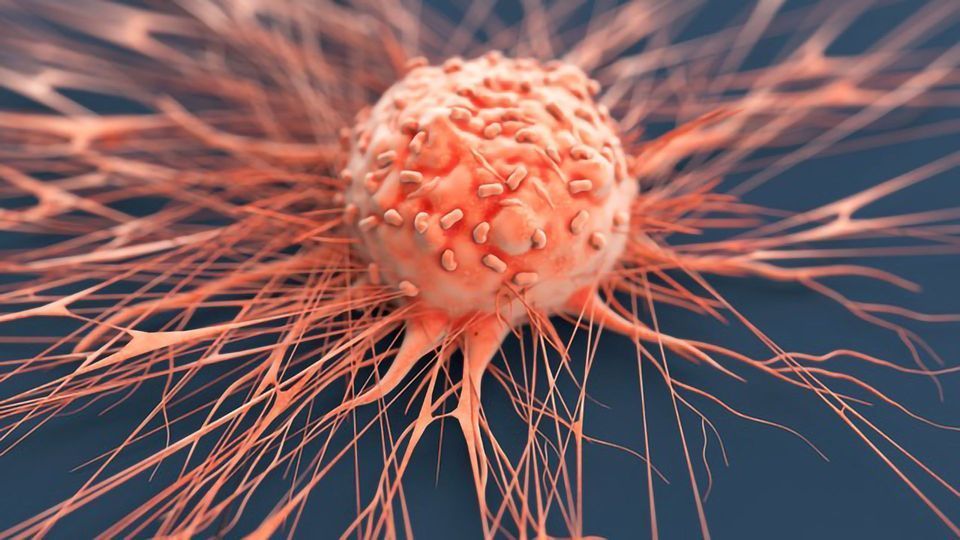High-Intensity Focused Ultrasound: A Novel Non-Invasive Cancer Treatment

Want to listen to this article for FREE?
Complete the form below to unlock access to ALL audio articles.
Read time: 2 minutes
A research team has examined the use of high-intensity focused ultrasound as a non-invasive cancer treatment that works by targeting acoustic waves to destroy cancer cells. The study was published in Bulletin of Mathematical Biology.
What is high-intensity focused ultrasound?
High-intensity focused ultrasound (HIFU) is a technique that uses heat to destroy tissue. In the context of cancer treatment, it is targeted to diseased tissue to thermally ablate cancer cells. It works by delivering energy to target tissues, increasing the temperature to a cytotoxic level, which is usually 50–80°C (or higher).
“HIFU is a therapeutic technique that utilizes non-ionizing ultrasonic waves (as opposed to ionizing therapy such as radiotherapy) to heat or ablate tumors. HIFU can also be used to increase blood flow or to destroy tissue, via thermal and mechanical mechanisms, ),” explains the study’s senior author, Siv Sivaloganathan, an applied mathematician and researcher from the University of Waterloo.
According to Sivaloganathan the clinical application of HIFU in the field of oncology can be broadly divided into three areas: extracorporeal, interstitial and trans-rectal: “Extracorporeal probes are used to primarily target tumor lesions through the skin, trans-rectal instruments have been developed to treat prostate cancers and interstitial devices have been developed to treat esophageal tumors and tumors of the biliary duct.”
Pros and cons to using HIFU
In contrast to radiotherapy or chemotherapy, which are both used to treat solid tumors, HIFU is associated with minimal adverse effects – particularly because HIFU is not ionizing. However, there are challenges that remain to be addressed. Sivaloganathan elaborates, “… there is a possibility that normal tissue may also become damaged, due to the elevated temperatures resulting from soft tissue absorption of the ultrasound waves.” Therefore, to ensure the therapy remains safe and effective, the temperature must be monitored and controlled throughout the procedure.
Sivaloganathan and his team are creating mathematical models to explore the effects of HIFU energy deposition in biological tissue, overcoming the need for animals as in vivo models to assess patient risk.
“Physical experiments almost invariably require the use of animal models, with the associated ethical questions (not to mention the enormous associated financial costs). Furthermore, the adjustment of the thermal dose and the frequency of administration, almost invariably necessitate the use and sacrifice of many animals. In contrast, a mathematical/computational model enables thousands of ‘in silico’ experiments and obviates the need for animal experiments until the very end,” says Sivaloganathan.
A technique known as magnetic resonance (MR) thermometry has been effective in mapping the temperature field in soft tissues in real-time, particularly those with high water content. However, Sivaloganathan explains that “in the case of osteoid osteomas and other bone cancers, MR-thermometry is ineffective due to the very low water in bone.”
In these instances, a mathematical model can help to predict the evolution of the temperature field when HIFU is administered and prevent destruction of healthy tissues and damage to bone marrow. “In our work, we use a mathematical model (comprised of a coupled heat and wave equation, and a thermal dose equation), to predict the evolution of the temperature field,” says Sivaloganathan.
Beyond cancer – HIFU’s broader applications
Sivaloganathan notes that HIFU holds potential beyond its use as a cancer therapy or diagnostic tool; it can also be used for clot lysis and in drug delivery when coupled with nanoparticles, or through the mechanism of sonoporation – a process that introduces pores into the cell membrane.
HIFU can be used to induce the physical phenomenon of unstable or “transient” cavitation to break up clots in blood vessels, which involves the sudden formation and collapse of bubbles, resulting in energy release that is detrimental to the cell. Stable cavitation, on the other hand, has the potential to facilitate the delivery of therapeutics to the brain via the blood–brain barrier by increasing cell membrane permeability and drug release through the generation of bubbles that oscillate in size, without collapsing.
Reference: Efendiev MA, Murley J, Sivaloganathan S. Dimension estimate of uniform attractor for a model of high intensity focussed ultrasound-induced thermotherapy. Bull Math Biol. 2021;83(9):95. doi: 10.1007/s11538-021-00928-x
Siv Sivaloganathan was speaking to Laura Elizabeth Lansdowne, Managing Editor for Technology Networks.


